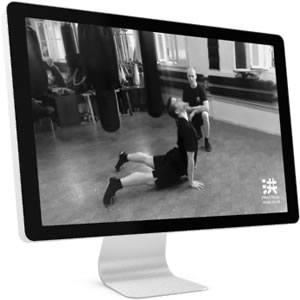 The chain whip was included in the modern Hung Kyun curriculum by Wong Fei Hung or one of the masters of previous generations. According to some sources, it comes from Lam Fuk Sing.
The chain whip was included in the modern Hung Kyun curriculum by Wong Fei Hung or one of the masters of previous generations. According to some sources, it comes from Lam Fuk Sing.
In ancient China, whips used to be used as a hidden weapon. A warrior usually wore them tied around his waist or diagonally across a shoulder and were only used after he lost his primary or secondary weapon (eg. spear or saber).
The length of the weapon depends on the user – held by the waist, it should reach almost to the ground. This type of metal “whip” is also called the “Three-Sectional Chain Whip” (Saam Jit Bin); in other (especially northern) styles, we can see five, seven, nine or even 13-sectional whips, usually longer.
The metal whip of the Hung Kyun system is also noticeably heavier than its northern counterparts. Because the handle and the individual parts are of the same length – with the exception of the last part, which is longer, heavier and sometimes sharp – the weapon can be also held and used as a short dagger-like weapon.

Antique Saam Jit Bin – collection of John Barbary Sifu
The key principles of using the “Cross Pattern Three-Sectional Chain Whip” (Sap Ji Saam Jit Bin) are
- Continuous movement, especially rotation
- Changing the direction of the whip, both after a successful and unsuccessful attack
The form has a regular, logical structure and emphasizes repetition of particular techniques. Unlike many northern or modern forms performed with light whips, the form sees no value in visual attractiveness or acrobatic performances, but in actual fighting.
Hung Ga Chain Whip, performed by Lau Jeung Yan, disciple of Grand Master Lam Sai Wing
Individual sections of the set include mainly:
- Figure eight/reverse figure eight
- Circular rotation overheagd, around the neck, waist and under the legs
- Sweeping strikes from left and right
- Strikes from above stopped behind one´s back and reverse rotation
- Figure eight with jumps
- Strikes from above stopped between one´s legs and reverse strike from below with a subsequent stab
- Rotating the whip around the forearms etc.
The techniques are performed in “Four Gates” (Sei Mun)/in the cross-pattern (Sap Ji), i.e. in four directions. The set is sometimes called “Tiger Tail Chain Whip” (Fu Mei Daan Bin) as well.
Learning the form itself is preceded by drills – to ensure the safety of the student – first with a piece of rope, later with a real weapon. It is taught at 8th Kap of our Practical Hung Kyun Curriculum.
If you like the article and if you want to support our work, please add your comment, click “tweet” or “like”. Your support will help us and encourage us to publish and share more articles and videos in the future!
Thank you for every visit, “tweet”, “like” or comment!
Upcoming Events!
[events_list]
-

Chinese Martial Arts: The Secrets of the Old Grandmasters
$9,95 Add to cart -
Sale!

PHK Intro Kit: Beginner’s Guide to Chinese Martial Arts
Original price was: $149,00.$79,00Current price is: $79,00. Add to cart -

Chan Hon Chung Sifu – “Moon Shadow Hand & Kick Poster
$9,95 Add to cart -

Chan Hon Chung’s Tiger and Crane Double Form Set Manual
$19,95 Add to cart
![]()


